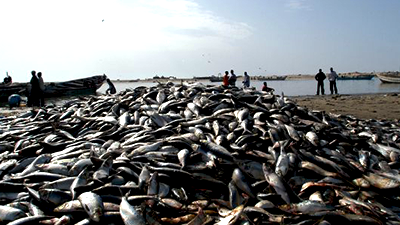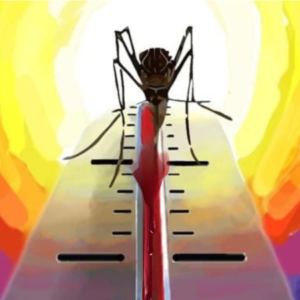India has the longest coastal board line of 7516.6 km, extending Bay of Bengal in the east, Arabian sea in the west, Indian ocean on the south. The coastal region contributes maximum productivity in the growth of countries progress, as coastal region is rich in biodiversity, coral reef, and aquatic life. The industry provides huge opportunity for employment, income, food products, national security and also a transportation mode of overseas. The development of urbanization, increase in population and developmental activities in the recent years has driven importance to coastal region. The fishing industry is the bread and butter to people living close to sea region as fishing is the primary source of livelihood for several community. India is the largest fisher exporter and aquaculture nation in the world with worth of 47,000 crores after China according to the report released by department of fishing, animal husbandry and dairying (DFAHD,2022).
In India the statistics of fishing is quite huge in terms of overall activity, this is completely managed by central department of India under the ministry of fishing, animal husbandry and dairying. According to the report (DFAHD,2022) the total fish production is 162.48 Lakhs Tonnes, marine fish production was 41.27 Lakhs Tonnes, inland fish production was 121.21 Lakhs Tonnes, and quantities of fisheries exported are 13,69,264 tonnes. In this, the growth of fish production has widened from 1980-81 to 2021-22 from 24.42 Lakhs Tonnes to 162.48 Lakhs Tonnes with annual average growth from 4.36 to 10.34%. The states and union territory which contribute to the total marine production are Gujarat (6.88 Lakhs Tonnes), Diu Daman (0.3 Lakhs Tonnes), Maharastra (4.33 Lakhs Tonnes), Goa (1.11 Lakhs Tonnes), Karnataka (5.89 Lakhs Tonnes), Lakshadeep (0.12 Lakhs Tonnes), Kerala (6.01 Lakhs Tonnes), Tamil Nadu (5.95 Lakhs Tonnes), Puducherry (0.39 Lakhs Tonnes), Andra Pradesh ( 5.94 Lakhs Tonnes), Odisha (2.01 Lakhs Tonnes), West Bengal (1.91 Lakhs Tonnes) and Andaman & Nicobar (0.44 Lakhs Tonnes).
In 2020-21, the total fish disposition of fish catching across states are divided as curing (3.92 Lakhs Tonnes), frozen (18.49 Lakhs Tonnes) and marketing fishes (105.64 Lakhs Tonnes), meanwhile the state contribution for the distribution are Andhra Pradesh (46.23 Lakhs Tonnes), West Bengal (17.56 Lakhs Tonnes), Odisha (8.73 Lakhs Tonnes), Uttar Pradesh (7.46 Lakhs Tonnes), Gujarat (7.44 Lakhs Tonnes), Tamil Nadu (7.22 Lakhs Tonnes), Bihar (6.83 Lakhs Tonnes), Kerala (6.15 Lakhs Tonnes), Karnataka (5.98 Lakhs Tonnes) and Maharashtra (3.98 Lakhs Tonnes).
In India the total number of fishermen are 1,56,65,630 and fisherwomen are 1,23,97,908 who are contributing to fishing sectors according to department of Fisheries, Animal Husbandry and Dairying (2022).
The national fisheries development board which was established on 2006 is now under Fisheries ministry.
- This board mainly focus the encouragement of fishing and aquaculture activities to be held as professional management.
- To coordinate with different ministry and states/union territories. To overall mange the fishing industry from production to marketing.
- To develop sustainable and preserve the natural resources.
- To improve the production and productivity of fishing by research and development.
- To effectively use the infrastructure for optimum management and utilization.
- To train, and empower women in employment, highlighting the importance of marine products in food and nutritional security.
The blue revolution, a Neel Kranti Mission introduced in order to contribute to the development of economic progress of country, fish farmer, and fishers. The investment of 3,000 crore supplemented through 7,523 crore fisheries aqua culture infrastructure development fund was done. This mission help in overall progress of coastal belt development with concerned to bio-security and environmental concerns and also focusing on food and nutritional security through full potential utilization of water resources for fisheries development sustainability.
The overall progress of Blue revolution has bought productivity of fresh water fish farming to 3 metric tonnes per hectare from 2.5 tonnes per hectare. Brackish water coastal aquaculture has touched 10 to 12 metric tonnes hectare. About 30,000 hectares have been added to the area under fish farming. The government has invested in hatcheries due to rising demand of quality fishes, which further increase the demand of aquaculture. The increased cage culture areas in reservoir and other open water bodies has led to increased output. Nearly 8,000 cages are installed and their productivity is more than 1000 per cent. Thereby this initiative safeguards the fishermen to go to restricted waterbodies.
The challenges faced in Fisheries industry
Exploitation: The major problem faced in fishing industry is overfishing which bring threat to aquatic life. This activity also brings the risk of extinction of aquatic life which cannot be recovered biologically. The food and agricultural organizations state of world fisheries report state that 90% of global marine fish are overexploited which bring their species extinct state.
High demand: The global growing health concern to avail various health components of food and its importance, had raised the demand for marine products.
Insufficient Mechanization: Marine capture fishery comprises of largely of smaller fisher man who operate traditional boats which is not sufficient to enter the beyond near shore water. This will make fisherman no access to high valued fishes.
Lack of cold storage had forced to use formalin, to keep fishes fresh which made these fishes restricted for exporting by ban on them
Improper fishing boundary had made fishermen in legal trouble of illegal fishing. Such cases are often seen in Pakistan, Sri Lanka, Bangladesh.
Pradhan Mantri Matsya Sampada Yojana (PMMSY), Is the flagship for fisheries industries which contributed 20,050 crores for growth and expansion of fishing sectors. The scheme focuses on all gaps concerning the productivity, infrastructure, development, technology, storage and exporting. The objectives are using fisheries industries in equitable, responsible and sustainable way.
- Using land intensively, diversifying, productively and expanding in land and water for fish production.
- By Increasing employment opportunity, safeguarding fishermen physically, economically and socially.
- In Creating solid management framework for fisheries.
- By Increasing contribution to agricultural gross added values.
The scheme goal for financial year 2025 are the fish productivity of 70 lakhs million tonnes, the national average productivity of aquaculture from 3 tonnes per hectare area to 5 tonnes per hectare area. Increasing the exporting from 46,589 crore to 1,00,000 crores creating 55 lakhs jobs contributing to fisherman economic state and also country economic condition. Thereby it is very important to conserve aquatic life which is the earning source to local communities as well as contributing a huge economic productivity through export business adding countries progress for the same, government role in intervention has added more development in this sector, the research and development in the fishing sector must be widened as it add evidence based practices, technological uplifting of industry such that smooth functioning is the final destination of the entire planning and work.
About the Author: Jencil D Souza is Lecturer and Research Officer at Edward & Cynthia Institute of Public Health ( ECIPH)
Disclaimer: Views expressed are the author’s own. Edward & Cynthia Institute of Public Health or Yenepoya (Deemed to be University) are not responsible for contents or opinions reflected in this article.

Jencil D Souza
Jencil D Souza is Lecturer and Research Officer at Edward & Cynthia Institute of Public Health ( ECIPH)
-
Jencil D Souza#molongui-disabled-link
-
Jencil D Souza#molongui-disabled-link
-
Jencil D Souza#molongui-disabled-link




